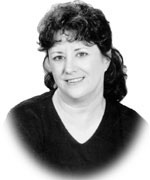 "SOS: U.S. Coast Guard Rescue" New Discovery Channel Series By Laine Welch October 17, 2005
A new series called "SOS: U.S. Coast Guard Rescue" has just begun which features members of the USCG at work "24/7" all across the country. "We have our crews embedded with the Coast Guard with cameras mounted on helmets, boats and helicopters we use the sound systems onboard to make viewers fell like they are a part of the rescues taking place," said Discovery spokesperson Jill Bondurant. The film crews captured all parts of the USCG's diverse missions, ranging from rescues of swimmers and boaters in distress to boardings and border patrols. Bondurant said the ten episode SOS series begins with harrowing rescues following Hurricane Katrina, where victims were plucked from roof tops and windows. Later programs will feature USCG teams and rescue missions from Kodiak operating in the Gulf of Alaska and Bering Sea. "Every region has its own challenges, but the vastness of the area the Coast Guard is protecting based out of Kodiak left us in awe. There's a lot of water out there," Bondurant said. She added that the Discovery
Channel felt very proud to be a part of the Coast Guard series.
"We hope that everyone who tunes in gets the same appreciation
of what these men and women do every day, and not just in the
face of a natural disaster," she said. The "SOS: U.S.
Coast Guard Rescue" programs air Tuesday nights on the Discovery
Channel. Fleming said the board also directed that the popular Salmon Market Bulletin compiled by the McDowell Group be expanded to include all seafood species of major market significance. It will launch this month as the ASMI Seafood Market Bulletin, and along with salmon, include production and market information, trends and analysis for pollock, halibut, cod, crab, black cod and other species. The more comprehensive coverage should help quell past criticisms that ASMI focuses too much on salmon markets. "The salmon resource now contributes about 25 percent of industry tax revenues. As whitefish has played more of a role in our revenues we need to provide the service and market support for that," Fleming said. This summer ASMI also began offering e-newsletters targeted to the retail and food service sectors. The Newsbriefs, Bulletins
and other information are free and only available via e-mail
and the internet. Sign on at the ASMI home page at www.alaskaseafood.org
. Sponsored by Salmon of the Americas, which includes Canada, Chile and the U.S., half page newspaper ads began this week in the New York Times, USA Today, Boston Globe and San Francisco Chronicle. Estimated cost is $250,000 per day, according to Intrafish.com. The ads followed an airing of the popular prime time TV show "Boston Legal," which focused on the debate over the impacts of fish farming on wild salmon stocks in British Columbia. The program is said to reach an audience of 15 million people. The Salmon of the Americas ad, titled "Ocean Farmed Salmon. Good for You, Good for the Oceans," says farmed salmon is one of the healthiest foods you can eat and tells how the industry is "pioneering ways to help the ocean produce more food than nature can do alone." It shows a chart boasting that farmed Atlantic salmon have more omega three's than wild salmon, and says consumers have no mercury worries with farmed product. The ad claims salmon farming stands up to rigorous environmental scrutiny and that studies show no negative impacts on wild stocks. It concludes by saying that every farmed fish is tracked from the time it goes into the water until it reaches the shore, guaranteeing the highest quality, purest fish you can buy. The farmed salmon industry
has been badly bashed over the past two years with ongoing major
media reports about environmental irresponsibility, and how farmed
fish contains colorants, antibiotics, PCBs and other contaminants.
The Salmon of the Americas ad campaign is a serious volley at
convincing consumers otherwise.
Publish A Letter on SitNews Read Letters/Opinions Submit A Letter to the Editor
|
||
